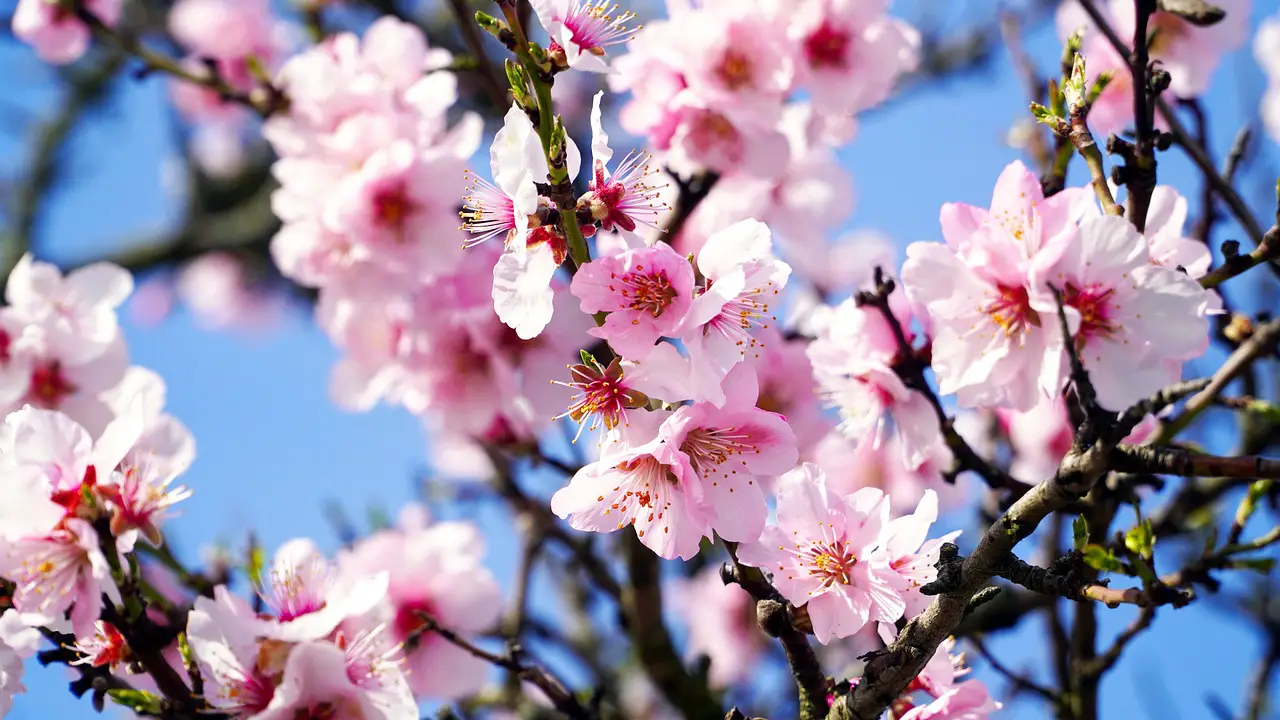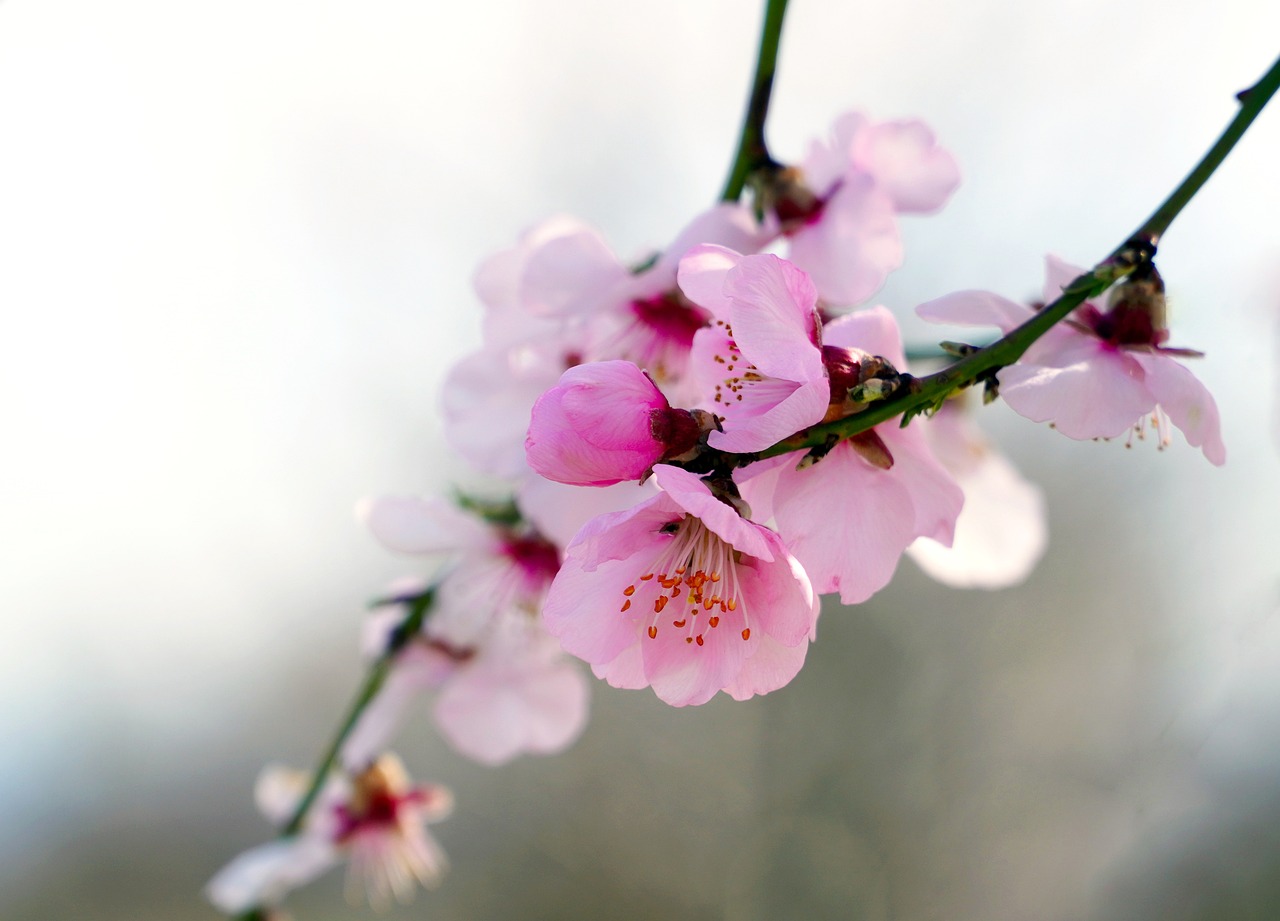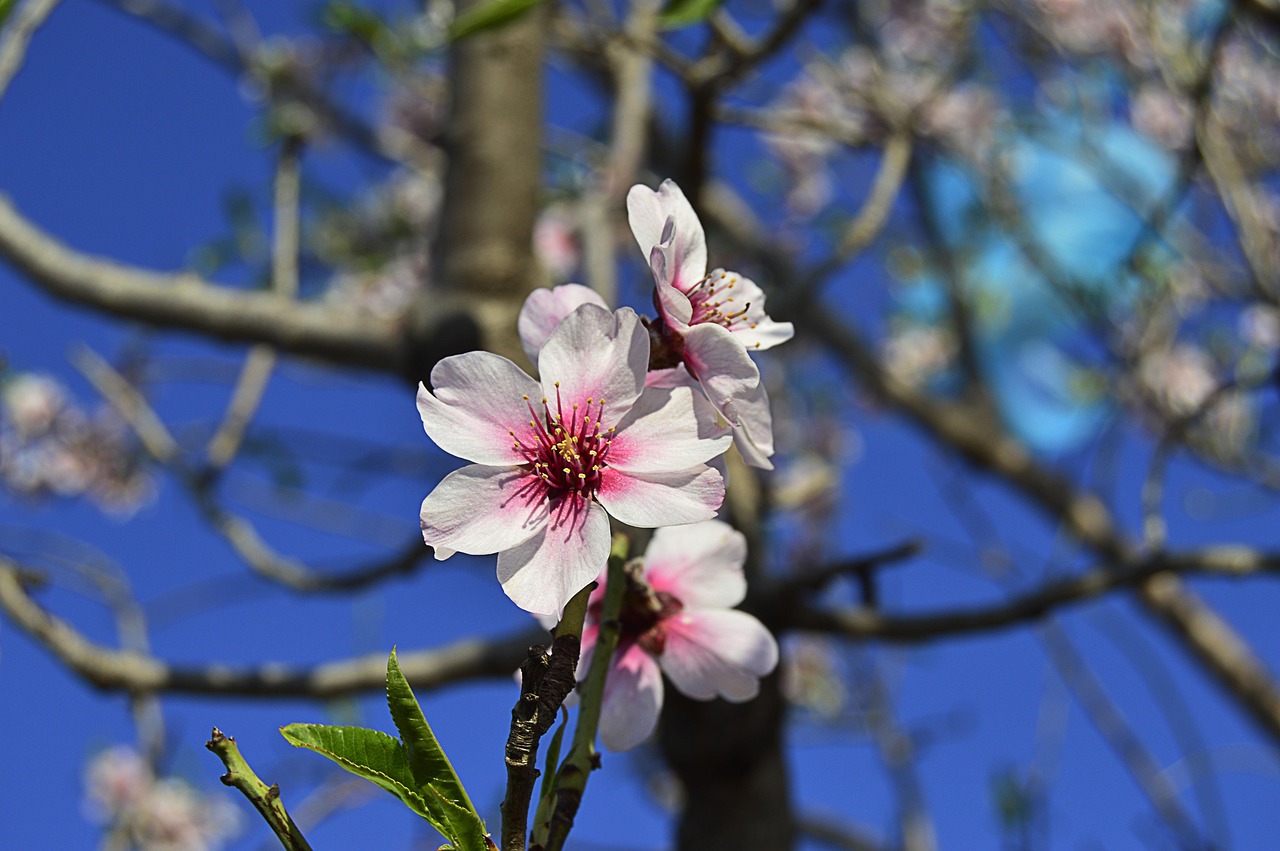Pruning almond trees is essential for promoting dense and full canopy formation. Proper pruning techniques enhance light penetration, improve air circulation, and encourage healthy growth, which ultimately leads to a higher yield of quality nuts.
Almond trees, known for their beautiful blossoms and delicious nuts, require careful attention to maintain their health and productivity. Pruning is a crucial aspect of almond tree management that not only enhances the tree’s shape but also facilitates better fruit production. When done correctly, pruning promotes a dense canopy, allowing sunlight to reach all parts of the tree.

Understanding the anatomy of almond trees is vital for effective pruning. Almond trees typically have a central leader with several lateral branches. This structure is important as it determines how the tree will grow and produce fruit. The goal of pruning is to maintain a balanced structure that supports optimal growth while reducing overcrowding among branches.
Benefits of Pruning Almond Trees
Pruning almond trees offers numerous benefits that contribute to their overall health and productivity. Here are some key advantages:
- Improved Air Circulation: Pruning allows for better airflow through the canopy, reducing the risk of fungal diseases.
- Increased Sunlight Penetration: A well-pruned tree allows sunlight to reach inner branches, enhancing photosynthesis.
- Enhanced Fruit Quality: Pruning helps in producing larger and higher-quality almonds due to improved nutrient distribution.
- Strengthened Branch Structure: Removing weak or damaged branches strengthens the overall structure of the tree.
- Better Pest Management: A properly pruned tree is easier to monitor for pests and diseases.
In addition to these benefits, regular pruning can significantly increase the lifespan of almond trees. It encourages robust growth by redirecting energy towards healthy branches and new growth rather than allowing energy to be wasted on weaker areas.

When to Prune Almond Trees
The timing of pruning is critical for achieving desired results. The best time to prune almond trees is during their dormant season, typically late winter or early spring before new growth begins. This period allows the tree to heal quickly and minimizes the risk of disease. However, light pruning can also be conducted in summer to remove any unwanted growth.
It is essential to avoid pruning during fall since this is a time when trees prepare for dormancy. Additionally, pruning during this period can expose the tree to winter injuries and pests.
Pruning Techniques for Dense Canopy Formation
Several techniques can be employed to achieve a dense and full canopy when pruning almond trees. Here are some effective methods:

- Crown Thinning: This technique involves selectively removing branches to improve light penetration and air circulation within the canopy. Focus on removing inward-growing branches and any that cross each other.
- Crown Raising: If lower branches are overcrowded or too low to the ground, they can be pruned back to allow more light and space for the upper canopy to develop.
- Crown Reduction: This method involves shortening the overall height of the tree by cutting back tall branches. It helps in maintaining a manageable size while promoting fullness in lower branches.
- Open Center Pruning: This technique creates an open center in the canopy, which encourages outward growth of branches. It helps in maximizing sunlight exposure and can enhance fruit production.
Each of these techniques can be adapted based on the specific needs of the tree and its growing environment. It is important to assess the tree’s health and structure before deciding on the best pruning method.
Tools Needed for Pruning
Having the right tools is essential for effective pruning. Here are some commonly used tools:
| Tool | Description |
|---|---|
| Hand Pruners | Ideal for small branches and precise cuts. |
| Loppers | Used for cutting medium-sized branches with more leverage. |
| Saws | Essential for larger branches that need more power to cut through. |
| Pruning Shears | Great for shaping and trimming smaller branches or delicate areas. |
Maintaining sharp tools is crucial, as clean cuts promote faster healing and reduce the risk of disease. After each use, tools should be cleaned and disinfected to prevent transferring pathogens between trees.

By understanding these techniques and tools, almond growers can ensure their trees develop a dense and healthy canopy that supports abundant fruit production.
Common Mistakes in Pruning Almond Trees
Pruning almond trees requires skill and knowledge, and mistakes can lead to poor tree health and reduced yields. Recognizing common errors can help growers avoid pitfalls. Here are some frequent mistakes made during the pruning process:
- Over-Pruning: Removing too many branches can stress the tree and hinder its growth. It is important to prune selectively and maintain a balance.
- Ignoring Tree Structure: Failing to consider the natural growth pattern of the tree can lead to uneven growth and poor canopy formation.
- Pruning at the Wrong Time: Pruning during late fall or early winter can expose the tree to frost damage. Always prune during the dormant season.
- Using Dull Tools: Using tools that are not sharp can result in jagged cuts, making the tree vulnerable to disease.
- Neglecting Cleanliness: Not disinfecting tools between trees can spread diseases and pests. Always clean tools before and after use.
By being mindful of these common mistakes, almond growers can enhance their pruning practices and improve the health and productivity of their trees.
Pruning Techniques for Different Growth Stages
Almond trees go through different growth stages, each requiring specific pruning techniques. Understanding how to adjust pruning methods according to the tree’s age is crucial for optimal development.
Young Trees (1-3 Years Old)
For young almond trees, the focus should be on establishing a strong framework. The following techniques are recommended:
- Establish a Central Leader: Select a single main trunk as the central leader, which will guide vertical growth.
- Encourage Lateral Branches: Choose 3-5 well-placed lateral branches to establish the tree’s structure. Prune competing branches to promote these selected branches.
- Remove Weak Growth: Trim any weak or poorly positioned branches to direct energy towards stronger growth.
Mature Trees (4 Years and Older)
Mature almond trees require different techniques to maintain productivity and health. The following practices are beneficial:
- Crown Thinning: Regularly thin out crowded branches to improve sunlight penetration and air circulation.
- Maintain Open Canopy: Remove any inward-growing branches to create an open canopy that encourages outward growth.
- Annual Maintenance: Conduct annual light pruning to remove any dead, diseased, or damaged wood and maintain tree health.
Transitioning from young to mature tree pruning techniques helps ensure that almond trees remain healthy and productive throughout their lifespan.
The Role of Fertilization in Pruning Success
Fertilization plays a significant role in the success of pruning efforts. Healthy trees respond better to pruning and recover faster. Here are some key considerations regarding fertilization:
- Soil Testing: Conduct soil tests to determine nutrient levels before applying fertilizers. This ensures that nutrients are balanced according to the tree’s needs.
- Nitrogen Needs: Almond trees typically require nitrogen for healthy growth. Apply nitrogen-rich fertilizers during the growing season for optimal results.
- Timing of Fertilization: Fertilize after pruning to support new growth. This timing helps trees recover quickly from pruning stress.
A well-fertilized almond tree is more resilient and capable of producing a fuller canopy after pruning.
Pest and Disease Management Post-Pruning
After pruning, almond trees may be vulnerable to pests and diseases due to open wounds. It is essential to implement effective management strategies:
Pest Control
To protect almond trees from pests, consider the following:
- Regular Monitoring: Check trees frequently for signs of infestation or damage. Early detection allows for timely intervention.
- Insecticidal Treatments: Use insecticidal sprays if necessary. Choose organic options where possible to minimize environmental impact.
- Natural Predators: Encourage beneficial insects like ladybugs and lacewings that prey on harmful pests.
Disease Prevention
Disease prevention strategies include:
- Avoiding Overwatering: Ensure proper drainage to prevent root rot and fungal diseases.
- Cleansing Pruning Wounds: Consider applying wound sealing compounds if recommended for certain diseases.
- Fungicide Applications: Apply fungicides as a preventive measure if conditions are conducive to disease outbreaks.
Efficacious pest and disease management practices will help maintain the health of almond trees after pruning, ensuring a dense and fruitful canopy formation over time.
Seasonal Care for Almond Trees
In addition to pruning, seasonal care plays a crucial role in the health and productivity of almond trees. Each season presents unique challenges and opportunities for almond growers. Understanding what to do during each season can enhance the effectiveness of pruning efforts and overall tree management.
Spring Care
Spring is a vital time for almond trees as they come out of dormancy. Proper care during this season encourages healthy growth and sets the stage for fruit production.
- Monitoring Bud Break: Keep an eye on the buds as they begin to swell. This is a critical time for pests and diseases.
- Fertilization: Apply balanced fertilizers rich in nitrogen to support new growth. Ensure that the soil has adequate nutrients for healthy development.
- Irrigation Management: Start regular irrigation as temperatures rise. Adequate water is necessary for budding and flowering.
Summer Care
During the summer months, almond trees require consistent care to ensure proper fruit development and health.
- Watering: Maintain consistent soil moisture, especially during dry spells. Deep watering encourages root development.
- Weed Control: Regularly remove weeds around the base of trees. Weeds compete for nutrients and water.
- Pest Monitoring: Continue monitoring for pests as fruit begins to set. Implement control measures as needed.
Fall Care
As summer transitions into fall, almond trees prepare for dormancy. This season focuses on wrapping up the growing season and preparing the trees for winter.
- Harvesting: Harvest almonds when they are mature. Timing is essential to avoid losses from pests or weather.
- Post-Harvest Fertilization: Apply a light fertilizer after harvest to replenish nutrients in the soil.
- Watering Adjustments: Gradually reduce watering as trees begin to enter dormancy.
Winter Care
Winter is a dormant season for almond trees, but it still requires attention to ensure their health for the next growing season.
- Pruning: Conduct pruning during late winter, focusing on shaping the tree and removing any damaged branches.
- Mulching: Apply mulch around the base of trees to insulate roots and conserve moisture.
- Pest Control Preparations: Inspect trees for signs of pest infestations before they emerge in spring. Take necessary actions to control them.
The Importance of Soil Health
The health of the soil directly influences the growth and productivity of almond trees. Healthy soil provides essential nutrients and fosters strong root development, which plays a critical role in canopy formation.
Soil Testing
Conducting regular soil tests helps determine nutrient levels and pH balance. Here are key components to consider:
- Nutrient Levels: Test for macronutrients like nitrogen, phosphorus, and potassium, as well as micronutrients such as zinc and iron.
- pH Levels: Almond trees thrive in slightly alkaline soils (pH 7-8). Adjust soil pH if necessary using lime or sulfur.
- Organic Matter: Assess organic matter content. Amending soil with compost can improve structure and fertility.
Soil Amendments
If soil tests reveal deficiencies or imbalances, consider applying amendments:
- Compost: Adding compost enhances soil structure and provides a slow-release source of nutrients.
- Cover Crops: Planting cover crops can improve soil health by adding organic matter and preventing erosion.
- Lime or Sulfur: Use lime to raise pH levels or sulfur to lower them based on soil test results.
Irrigation Practices for Optimal Growth
Irrigation is essential for maintaining healthy almond trees, particularly in regions with limited rainfall. Proper irrigation practices contribute to robust growth and canopy formation.
Irrigation Methods
Several irrigation methods can be employed based on the specific needs of almond trees:
- Drip Irrigation: This method delivers water directly to the root zone, minimizing evaporation and runoff while promoting efficient water use.
- Sprinkler Systems: Sprinklers can cover larger areas but may lead to higher evaporation rates. Choose timers to optimize watering times.
- Flood Irrigation: Suitable for certain terrains, this method involves flooding fields but requires careful management to avoid waterlogging.
Irrigation Scheduling
Establishing an effective irrigation schedule is crucial. Consider the following factors when planning your irrigation:
- Soil Moisture Monitoring: Use soil moisture sensors or manual checks to determine when trees need watering.
- Weather Conditions: Adjust watering schedules according to rainfall and temperature changes, ensuring trees receive adequate moisture without overwatering.
- Growth Stage Needs: Young trees may require more frequent watering compared to established trees that can tolerate drier conditions.
Implementing proper seasonal care, maintaining soil health, and utilizing effective irrigation practices are vital steps in supporting the health and productivity of almond trees, ultimately promoting dense and full canopy formation.
Advanced Pruning Techniques
As almond trees mature, advanced pruning techniques can be employed to optimize canopy formation and overall tree health. These methods may require more skill and experience but can yield significant benefits in terms of fruit quality and tree longevity.
Espalier Pruning
Espalier pruning is an innovative method that involves training the tree to grow flat against a support structure. This technique can maximize space, especially in smaller orchards.
- Benefits: Espalier trees are easier to manage and harvest. They also receive better light exposure, leading to improved fruit production.
- Implementation: Train branches to grow horizontally along a trellis or fence. Regularly tie and prune to maintain the desired shape.
V-Spindle Training
This technique focuses on creating a central leader with branches that form a V-shape, allowing for efficient light penetration and air circulation.
- Setup: Select a central leader and encourage two side branches to grow at an angle. This configuration helps in maintaining an open canopy.
- Maintenance: Regularly thin out inner branches to avoid overcrowding and ensure that sunlight reaches all parts of the tree.
Renewal Pruning
Renewal pruning is particularly useful for older trees. It involves removing older wood to stimulate new growth and rejuvenate the tree.
- Process: Identify and remove older branches that produce fewer almonds. This encourages new shoots, which will yield better fruit in subsequent years.
- Timing: Best performed during late winter or early spring when trees are still dormant.
Monitoring Tree Health and Growth
Aside from pruning, ongoing monitoring of tree health is critical to achieving a dense and full canopy. Here are some strategies for effective health management:
Visual Inspections
Regular visual inspections help identify potential problems early. Look for signs of:
- Pests: Check for unusual leaf damage or droppings that may indicate infestations.
- Disease: Watch for discoloration, wilting leaves, or unusual growth patterns that could signal disease.
- Nutrient Deficiencies: Yellowing leaves or stunted growth might indicate a lack of essential nutrients.
Record Keeping
Maintaining detailed records of pruning activities, irrigation schedules, and soil amendments can provide valuable insights into the overall health of almond trees.
- Growth Patterns: Documenting growth patterns over time can help you adjust management practices effectively.
- Pest/Disease Incidents: Keep track of any pest or disease outbreaks to analyze trends and improve preventive measures.
- Nutrient Applications: Record fertilizer applications and results to optimize future nutrient management.
The Role of Technology in Almond Tree Management
The integration of technology into almond tree management has revolutionized practices, making it easier to achieve optimal growth and productivity.
Irrigation Technology
Smart irrigation systems utilize sensors to monitor soil moisture levels and adjust watering schedules accordingly. This ensures trees receive the right amount of water while conserving resources.
Drones and Imaging Technology
Drones equipped with imaging technology can provide aerial views of orchards, helping farmers monitor plant health and identify areas needing attention.
- Health Assessments: Aerial imaging can reveal variations in canopy density and identify stressed trees quickly.
- Mapping Resources: Drones can help create detailed maps of orchards, aiding in planning for future management efforts.
Final Thoughts
Pruning almond trees for dense and full canopy formation is a multifaceted process that involves understanding tree biology, implementing effective techniques, and providing ongoing care throughout the year. By adopting best practices in pruning, fertilization, irrigation, and pest management, growers can enhance the health and productivity of their almond trees.
The use of advanced techniques such as espalier and V-spindle training can further optimize space and light exposure, while technology offers innovative solutions for monitoring tree health. With careful attention to each growth stage and seasonal needs, almond growers can ensure their trees remain robust and productive for many years to come.
This comprehensive approach not only promotes abundant yields but also supports sustainable orchard management practices that benefit both the environment and the grower’s bottom line. By integrating knowledge, skill, and technology into almond tree management, achieving a dense and fruitful canopy becomes an attainable goal.
